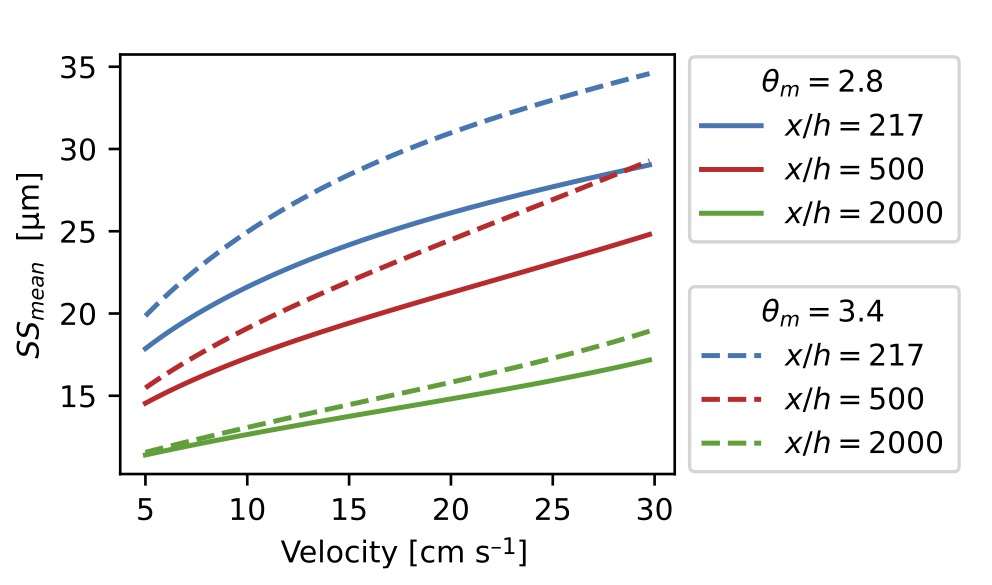This is a question we tackled experimentally with Brian Romans and Andrew Parent for systems dominated by advective dispersal of sediment. Results of the study are presented in Culp et al. (2021). The figure below summarizes some of the main findings – showing how mean suspended grain size (d = etheta_m [microns]), current velocity set the mean silt size in the deposit for different down current distances (presented here as scaled by current thickness, x/h).
Culp, J., Parent, A.M., Abolfazli, E., Strom, K. and Romans, B.W. (2021), Advective sorting of silt by currents: A laboratory study. Sedimentology. doi: https://doi.org/10.1111/sed.12889

Paper Abstract: Accumulations of fine sediments along continental shelf and deep-sea bathymetric contours, known as contourite drifts, form a sedimentary record that is dependent on oceanographic processes such as ocean–basin-scale circulation. A tool used to aid in interpretation of such deposits is the sortable silt hypothesis, which suggests that the mean size of the sortable silt (silt from 10 to 63 μm) within a deposit can be used as a proxy for current velocity. While the hypothesis has been applied to numerous drift deposits, it has not been extensively explored. Slow deposition rates of contourite drift systems make it difficult to study in the deep ocean, and past laboratory studies have not tested the full range of conditions or mechanisms that could lead to sorting. This study uses flume experiments and theory to examine how the mean sortable silt in a deposit is related to current velocity under the action of advective depositional sorting. Tests were conducted for a fixed amount of time with four suspended sediment mixtures and current velocities typical of deep-sea settings (5 to 25 cm s−1). Developed beds were sampled at fixed locations from the entrance and sized. The deposit grain size fined downstream and coarsened with increasing velocity at a particular distance from the inlet. Simple theory was able to capture the observations. Regardless of bed morphology or source sediment mixture, the mean sortable silt in the deposit was related to velocity at a particular flume location across all sediment mixtures. The slope of the relationship between velocity and size was dependent on the distance between the inlet and location of interest. Despite the simplified nature of the study, and the limitations regarding the presumed variability in natural systems, these findings broadly support the validity of mean sortable as a proxy for palaeocurrent velocity at a distance along a depositing current.
